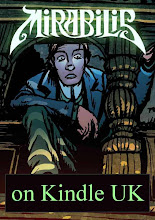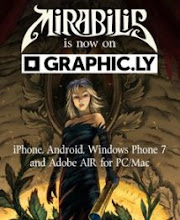I have this theory about reviews: anything disclosed from the first act of the story doesn’t count as a spoiler. I mean, come on - nowadays you get movie trailers that show you three-quarters of the plot, so just revealing the premise can’t count as a spoiler, right?
(If you don’t agree, and you plan on seeing Surrogates, duck out now. You’ve been warned.)
Surrogates is a movie starring Bruce Willis. But originally it was a graphic novel by Robert Venditti. Hollywood is, of course, going through one of its phases of being in love with graphic novels. There is some rhyme and reason in that. A graphic novel is a great way not only to tell the story (not many people can read a script nowadays) but also to give studio execs an idea of your intended look and feel. Even if it’s a look they don’t like – well, as William Goldman says, at least you’ve got something to change.
Surrogates is set in the near future when people can send out robot duplicates of themselves to experience any thrill they fancy while the real person remains safely hooked up to a cybernetic link at home. But somebody has decided that human beings shouldn’t live this way, and he’s making his point by going around trashing surrogates.
Now here’s the interesting bit. In the graphic novel, the mystery man’s campaign is on a par with somebody blowing up cars. You lose your Porsche. Well, that’s a bummer, boo hoo, but life goes on. I was reading it thinking, “It’s a fun concept, but the stakes aren’t high enough for this to be a movie.”
The screenwriters (Michael Ferris and John Brancato) obviously thought the same. They changed it so that the bad guy has found a method of destroying surrogates that also kills the user. See: simple and obvious, but suddenly the story has real bite. It is in fact pretty much the single most to-the-point story you can tell with that concept. If use of surrogates is all about staying safe, and somebody thinks this is breeding a generation who don’t know the real savour of living, how else are you going to unfold that story if not by bringing the danger close to home, by shattering that cocoon of safety?
My point is not that screenwriters are cleverer than comic book writers. Venditti created the concept from nothing, and that’s worth a big stack of kudos. And he wasn’t necessarily even trying to find the one big story; he was writing the first five comics in an ongoing series, no doubt with an eye to exploring many facets of the central idea.
The point is, this is the way Hollywood should be looking at graphic novels. Not as ready-to-shoot design specs, but as creative testbeds that you can use as a jumping-off point to work up a story structure, script, concept art - the works.
Considering that a graphic novel costs about $70,000 of everyone’s time, and the going rate for an original screenplay under WGA guidelines is at least $109,000 – and that’s for just words, no art – you can see that it’s a good medium for showing the idea so everybody can decide if they want to jump aboard. But too many over-faithful adaptations of the original material will mean flops, and then Hollywood will get panicky and the execs won’t want to look at any graphic novels, worthy or not.
If we ever get to do a Mirabilis movie, it’s unlikely to be a retelling of the Jack and Estelle story. That’s intended as one thing, the movie is another. 700-page graphic novel epics are more in the way of being a TV series. We do in fact already have some ideas for a Mirabilis movie, and when the first four graphic novels are written we may write that as a screenplay – or, maybe, do it as a shorter, self-contained graphic novel. There are enough stories in the Mirabilis concept to keep Leo and me busy for a decade or more without ever covering the same ground. Luckily, when you’re doing something you love, it doesn’t feel like work at all.


























No comments:
Post a Comment